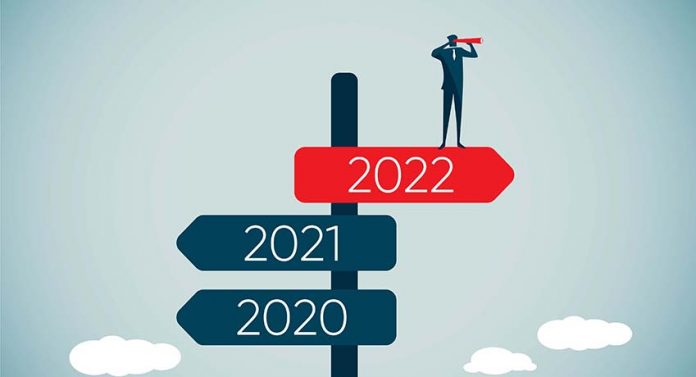It’s that time of year—to take stock and reflect on the last 12 months and look ahead trying to predict what 2022 will bring.
But if the past couple of years have taught anything, it’s that predictions can be tricky. A year ago, still in the throes of the pandemic, many turned hopeful eyes to 2021 expecting the world—and the customer experience landscape—to largely return to “normal.” With 2022 on the horizon, though, that hasn’t been the case.
Predictions that didn’t materialize
Here are few predictions for 2021 that, in hindsight, missed the mark:
2021 prediction: The COVID-19 pandemic’s impact on businesses will end.
What really happened: Despite the vaccine rollout, the pandemic continues to affect people’s—and businesses’—daily lives as we head into 2022. Vaccine hesitancy and the formation of new variants like Delta have kept COVID at the forefront of many conversations and business decisions.
Now, compounding the uncertainty, many companies are grappling with a complex set of logistics around vaccine mandates. Public sector employees and contractors, health care workers, and private-sector workers at companies with more than 100 employees face mandates under which they must get vaccinated or undergo weekly COVID-19 testing.
This brings an entirely new set of challenges to businesses: Helping employees schedule vaccine appointments, verify whether workers are vaccinated, and comply with testing requirements. It’s also forcing companies to rethink their employee experience models, leading with empathy when it comes to this emotionally charged topic.
2021 prediction: Employees will be eager to return to the workplace.
What really happened: With the devastating financial toll the pandemic took on so many families, including job losses, many expected workers to eagerly return to the workforce—and the office—once it became safe to do so.
Instead, there’s been a Great Resignation. Workers continue to quit jobs in record numbers, in search of opportunities that offer better pay and more flexibility. The pandemic spurred a lot of people to consider whether they were truly happy in their jobs; and for many the answer was a resounding “no.”
Additionally, the pandemic has made it clear that work-from-home options will be here to stay.
Employees enjoy the flexibility and productivity working from home offers, and employers can tap into a larger talent pool when they’re no longer constrained geographically. But this shift means companies now must redefine their employment engagement strategies and invest in tools that make it easy for remote teams to collaborate.
A big question looms for 2022 and beyond: How will employers create a feeling of unity and loyalty among workforces that are no longer coming together to work in the same physical spaces?
2021 prediction: The economy will bounce back post-pandemic, just as quickly as it declined.
What really happened: The V-shaped economic recovery that many forecasted has not come to fruition. Instead, labor shortages, supply chain problems, and rising wages are hindering growth and creating new challenges in many areas.
Businesses find themselves having to manage an increase in contact center volume – when an item is out of stock, for instance, due to supply chain delays – with a smaller workforce, which can lead to frustrating experiences for employees and customers alike. And when new workers are hired, businesses need to ensure they have an easy, agile, and quick onboarding process.
In the new normal, companies must try to prioritize EX and CX while navigating unforeseen market conditions.
Where there’s more work to do
Not all predictions made for 2021 were bad. Some simply have left more work to be done as 2022 begins. Here are a few predictions that weren’t wrong, but weren’t fully realized either:
2021 prediction: Customers will increasingly want digital interactions.
Room for improvement: Consumers’ embrace of digital channels is nothing new, but demand for digital options soared during the pandemic as more customers sought the ease and safety of online, mobile, and chat-based interactions over visiting brick-and-mortar businesses.
Mid-year, 22% of global purchase influencers named accelerating their shift to digital as their top priority, up from 18% pre-pandemic, according to the CallMiner report, “Conversational Intelligence to Shape Your Brand Experience.” But have companies been investing enough in digital, and in the right offerings?
In the same report, more than half of respondents (57%) said their top technology initiative over the next 12 months would be investing in digital experience technologies, which suggests many brands haven’t yet mastered delivering seamless digital CX.
2021 prediction: Artificial intelligence will play a bigger role in CX.
Room for improvement: Embracing automation with a human touch was poised to be a widespread trend in 2021, and some brands have made great strides, but many companies still haven’t harnessed the full potential of this powerful tool.
AI solutions make associates’ jobs easier, which results in better experiences for associates and customers alike. TTEC’s RealPlay bot, for instance, combines AI and machine learning technology to simulate real-world customer scenarios. Employees learn by completing the job and getting real-time feedback and coaching. Tools like RealPlay, which is completely digital, on-demand and asynchronous, will play a major role in the future of CX.
Innovate, adapt, and act in 2022
After the last couple of years, it can feel difficult to predict what 2022 will bring. But some things are clear: Consumer expectations keep growing, and they’re becoming increasingly digital – and the brands that truly stand out will be those that strike the right balance of technology and people to deliver seamless, omnichannel experiences across all points of the customer journey.










